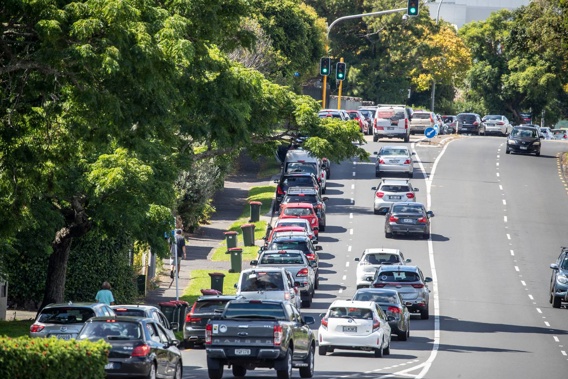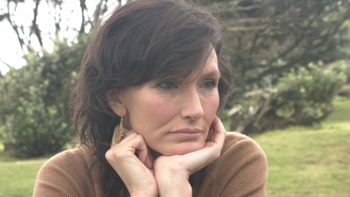
There are 23,183 new community cases of Covid-19, director-general of health Dr Ashley Bloomfield announced.
And 503 people are in hospital, including seven in intensive care.
Bloomfield said 146,527 active cases of Covid-19 are in the country.
One person has died in a Bay of Plenty rest home, the Ministry of Health says.
"The person died of an unrelated medical condition while receiving palliative care and had tested positive for Covid-19."
Hospitalisation rates are calculated by the number of people in hospital over case numbers.
The current rate is 3.5 per cent per 1000 – but this number was expected to rise, Bloomfield said.
Around 983,000 people in the country had not received their booster but were due for it.
RATs were being taken up from people around the country – and the tests continued to arrive in the country on a daily basis.
The new RATs were flowing out through the supply chains but the chains were being challenged as many who worked in them were with Covid-19 cases or contacts.
Bloomfield said new technology had been developed from people who were symptomatic or a contact to get RATs, more than 65,000 orders have been placed online.
Bloomfield described the system as similar to a "click and collect" process.
He said health services across the country, including Auckland, were managing to provide care for anyone who needed it.
He thanked staff who had continued to keep New Zealanders safe during a challenging time.
Ministry of Health primary care lead Dr Joe Bourne acknowledged the enormous amount of work taking place in the community – including iwi, providers and telehealth.
All of those people working in that sector had been dealing with a huge amount of change, which is challenging and it could feel like an uncomfortable place to be in as case numbers increased.
Bourne said collaboration was needed between all providers and community members to assist themselves as much as possible.
The majority of people catching Covid are able to care for themselves with the support of their families, he said.
Bourne said this variant was more similar to a cold or flu and most people would be able to manage it themselves – and called for people to create an "Omicron first aid kit".
The kit would include throat lozenges and paracetamol, for example, he said.
He said it was brilliant to see how communities were supporting each other; networks of neighbours were setting up groups to inform each other if one person tested positive then providing support such as doing supermarket shopping.
General practices were working hard to proactively identify those who were higher risk, he said.
If all the cases presented to general practice, it would just be "too much", Bloomfield said.
"While general practices will be able to continue to meet need when it's there, they won't be able to call every single person who has Covid," he said, asking people to look at the information that was available online.
Use the digital tools available, if possible, he said, as waiting times for telehealth can get quite long.
Systems had been built that support providers to work collaboratively, he said.
The system wasn't perfect and would be constantly improved, he said.
As providers adapted to the systems, there could be challenges and the ministry would provide support in this area, he said.
He acknowledged it was humbling to see community providers rise to the challenge once again and there was huge confidence in their ability.
Bloomfield said it was hard for health authorities to know if everyone was recording their RAT result.
Bloomfield also said the rate of hospitalisation was five times higher for unvaccinated people compared to people who had had their booster dose.
Bloomfield said DHBs would continue to open up collection points for RATs.
For critical workers wanting to get RATs, Bloomfield pointed to the online order form as well as Healthpoint, which was constantly updated with locations of collection points.
He asked people to be patient as a number of people at these sites had been subjected to unpleasant behaviour.
He said the peak of case numbers was expected over the next week or two and hospitalisations were expected to peak two weeks after that.
Eleven types of RATs were available in New Zealand and the advice given out or on the website was general – and tried to cover all types.
However, ultimately, people should follow advice on the packet.
He said it was important to register a positive RAT result as it helped health services understanding the burden of illness in terms of being prepared.
It then helped in identifying who that person's contacts were, he said.
Bloomfield wouldn't make comment on tomorrow's worker strike as the ERA was considering the issue.
He asked protesters returning to their homes or home towns to take Covid-19 seriously and follow the legal requirements to isolate.
Bourne said people using RATs were informed of their diagnosis right away – but some of the issues the ministry was working through included the fact information was being passed through multiple platforms.
Teams were problem-solving as fast as they can.
If people were feeling unwell, they should seek advice.
Over winter, and the border reopening, New Zealand would see other viruses and by the middle of the year we would see influenza across our border, Bloomfield said.
What had been learned during Covid would apply to influenza and the common cold, such as the use of masks and the importance of staying at home if one was unwell, he said.
All of these things would help us through this winter and remain important, Bloomfield said.
He reminded parents with children who weren't up to date with their measles vaccinations to get them.
On reports that pharmacies weren't aware they would be RATs collection sites, he said many, not all, were doing supervised RATs, such as for people attending court.
Pharmacies could opt-in to be a RAT collection point.
People were used to going to pharmacies and GPs for care so people would assume they would be able to access them there, he said.
Individual pharmacies may not have been aware they were a RAT collection point, he said. Conversations had happened with pharmacy industry representatives, and individual pharmacies would opt out.
Recent modelling on the peak was below the numbers we are seeing now.
A peak was expected in the next week or so but Bloomfield could not recall the exact case number that correlated to.
He said he wasn't aware of anyone who had caught Delta and had also caught Omicron.
He expected there would be a story about it if that was ever to be the case.
On the possible flare-up of Delta after an Omicron peak, Bloomfield said he didn't know if that would happen but we would all be watching that with interest.
Strike action planned
The latest numbers come a day ahead of a major strike of workers processing tests and undertaking contact tracing.
Yesterday, New Zealand hit a record 22,152 new community cases of Covid-19 and 405 people in hospital. Of those needing hospital-level care, 10 were in ICU or HDU.
Public health experts say that the peak of this latest wave is expected across Auckland first, perhaps within two weeks, and then the rest of the country a week later.
It comes as allied, scientific and technical public health workers prepare to walk off the job over low pay and poor working conditions.
The first of two 24-hour strikes involving 10,000 health workers from 70 roles – including contract tracers and laboratory staff who work processing Covid-19 tests – will take place tomorrow. A second walkout is planned for March 18.
The timing couldn't be worse with Bloomfield, who has apologised to the 32,000-odd people who had been waiting five days or more for the results of their PCR test.
He urged those awaiting results to undertake a rapid antigen test (RAT) and gave assurances that the tests will still be processed with 9000 sent to Australia over the weekend for processing.
Surge testing capacity was meant to be able to handle 77,000 samples a day, the Government announced in late January, but the system came under intense pressure when demand was less than 30,000 a day.

Some 9000 tests had to be flown to Australia at the weekend as New Zealand labs became overwhelmed. Photo / Michael Craig
Meanwhile, Covid Response Minister Chris Hipkins yesterday said high rates of vaccination were making a difference in how New Zealand was weathering the outbreak.
While case numbers continued to grow, the key metric health officials were focusing on was those that needed high levels of care such as hospitalisation.
There were now 123,836 active community cases, meaning 2.4 per cent of New Zealand's population was infected.
Of the 405 people in hospital, five were in Northland, 56 in North Shore, 142 in Middlemore, 108 in Auckland, 37 in Waikato, 12 in Bay of Plenty, five in Rotorua: three in Tairawhiti, one in Hawke's Bay, four in Taranaki, two in MidCentral, two in Hutt Valley, 11 in Capital and Coast, six in Nelson Marlborough, 10 in Canterbury and one in Southern DHB.
More than 80 per cent of yesterday's record 22,152 community cases were detected by a RAT.
Hipkins said access to RATs continued to progress across the country.
He urged people to be patient while trying to access tests, and said more sites were being stood up.
There was no need to stock up on rapid antigen tests and tests were "arriving all the time".
"The older your tests are the less accurate they are so we don't want people stockpiling," Hipkins said.
All of the DHBs had now had 90 per cent uptake of the first dose of the vaccination.
A significant milestone had also been met with 60 per cent of eligible Māori now boosted.
Take your Radio, Podcasts and Music with you









